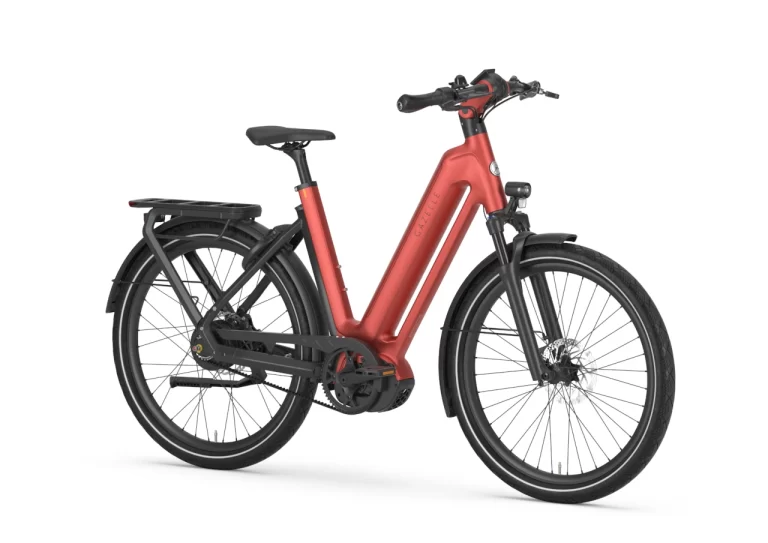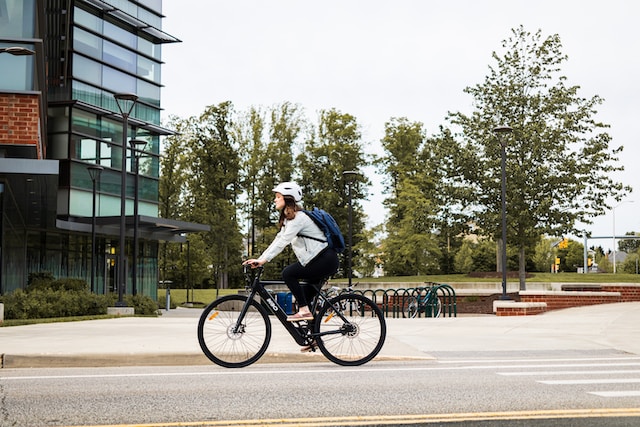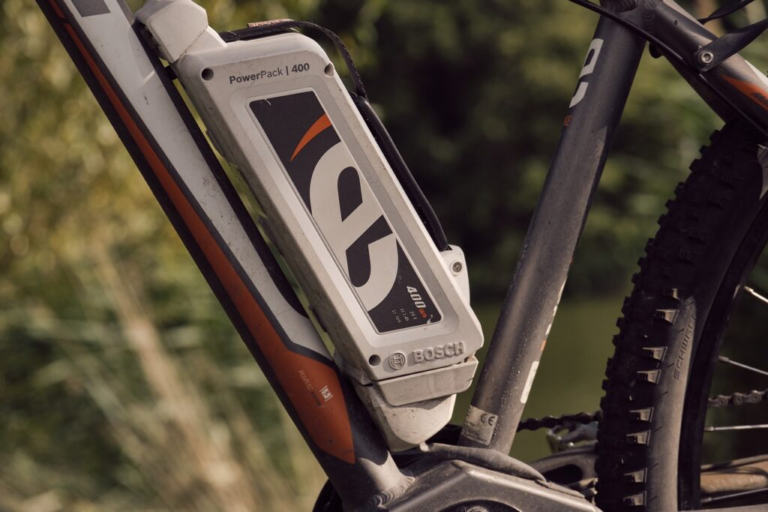Unlocking the Future of Electric Bikes: A Deep Dive into Pedal Assist Technology
The bicycle, once a simple mode of transportation, has undergone a radical transformation. The integration of electric power has birthed a new era of cycling, one characterized by efficiency, accessibility, and sustainability. At the heart of this revolution lies pedal assist technology, a system that seamlessly blends human effort with electric propulsion.
Pedal assist bikes have rapidly gained popularity, offering a compelling alternative to traditional cycling and motorized transport. They provide a boost on hills, reduce fatigue on long rides, and make cycling accessible to a wider range of individuals. However, the true potential of pedal assist technology is only beginning to be realized.
As we look ahead, a wave of innovation is poised to reshape the pedal assist bike landscape. From intelligent systems that adapt to rider preferences to regenerative braking that extends battery life, the future of cycling is undeniably electric. Join us as we explore the cutting-edge technologies that are set to redefine the way we experience two-wheeled travel.
Key Takeaways
- Intelligent Pedal Assist Systems are the New Norm: Gone are the days of rigid pedal assist settings. Intelligent systems are being developed to adapt to various riding conditions, terrain, and rider input.
- Adaptive Pedal Assist Technology: Tailored Assistance: The future of pedal assist lies in personalization. Adaptive assist technology will analyze rider characteristics, terrain, and even the weather to deliver customized support.
- Regenerative Braking: Powering Your Ride: Regenerative braking is gaining traction in the e-bike world. By converting kinetic energy into electrical energy during braking, this technology extends battery life and improves overall efficiency.
- Sensor Technology is Key: Advanced sensors are the backbone of intelligent pedal assist systems. By gathering data on factors like torque, cadence, and rider input, these sensors enable bikes to make real-time adjustments for optimal performance.
- Beyond the Commute: Pedal Assist for All: While pedal assist bikes have traditionally been associated with urban commuting, the future holds expanded applications. From mountain biking to cargo hauling, these versatile machines are becoming more accessible to a wider audience.
- Integration with Smart Devices: Expect seamless integration between your pedal assist bike and your smartphone. Features like navigation, fitness tracking, and even theft prevention are on the horizon, enhancing the overall riding experience.
- Sustainability at the Core: As environmental consciousness grows, so does the demand for sustainable transportation options. The pedal assist bike industry is responding with eco-friendly materials, efficient energy systems, and extended battery life.
Intelligent Pedal Assist Systems: The Brain of the Bike
Intelligent pedal assist systems are revolutionizing the way we experience cycling. These sophisticated systems represent a significant leap forward from traditional pedal assist technology. Rather than offering a fixed level of assistance, intelligent systems continuously analyze a multitude of factors to deliver a truly customized riding experience.
At the core of these systems are advanced sensors that gather data on rider input, terrain, and environmental conditions. Torque sensors, for example, measure the force applied to the pedals, allowing the system to provide proportional assistance. Cadence sensors monitor pedaling speed, while speed sensors track overall bike velocity.
The collected data is processed by a sophisticated control unit, which acts as the “brain” of the system. Using complex algorithms, the control unit determines the optimal level of motor support in real-time. This means that the bike can automatically adjust power output to suit varying conditions, such as climbing steep hills, riding into headwinds, or cruising on flat terrain.
Furthermore, intelligent pedal assist systems are becoming increasingly adept at learning rider preferences. Over time, the system can adapt to individual riding styles, ensuring that the bike always feels like an extension of the rider.
As technology continues to advance, we can expect even more sophisticated intelligent pedal assist systems to emerge, pushing the boundaries of what is possible on two wheels.
RELATED CONTENT
Adaptive Pedal Assist Technology: Personalized Power
Adaptive pedal assist technology represents the next frontier in personalized cycling experiences. Unlike traditional systems that offer fixed levels of support, adaptive systems intelligently adjust power output based on a multitude of factors, including:
- Rider Characteristics: Factors such as weight, fitness level, and riding experience are considered to tailor the pedal assist to individual needs.
- Terrain Analysis: The system can detect changes in elevation, incline, and decline, automatically adjusting power output to match the rider’s effort.
- Riding Conditions: Factors like wind speed, temperature, and road conditions can influence the level of pedal assist provided.
- Real-time Performance Metrics: By continuously monitoring factors such as heart rate, cadence, and power output, the system can optimize assistance to maintain desired effort levels.
This level of customization ensures that riders can enjoy a more efficient, comfortable, and enjoyable ride. Whether tackling challenging climbs or cruising along flat roads, adaptive pedal assist technology provides the perfect amount of support at the right time.
Regenerative Braking E-Bikes: Powering Your Ride
Regenerative braking is a groundbreaking technology that is transforming the electric bike landscape. This innovative system captures the kinetic energy generated during braking and converts it into electricity, which is then stored in the bike’s battery. Essentially, the act of slowing down becomes a means of recharging the bike.
The benefits of regenerative braking are substantial. Primarily, it extends the overall range of an electric bike by effectively recycling energy that would otherwise be lost as heat. This is particularly advantageous for riders who frequently encounter hills or other conditions that require frequent braking.
Moreover, regenerative braking contributes to improved energy efficiency, reducing the environmental impact of electric bikes. By maximizing the utilization of battery power, riders can enjoy longer rides with fewer charges, making this technology a compelling choice for eco-conscious cyclists.
While regenerative braking offers significant advantages, its effectiveness can vary depending on factors such as the bike’s motor type, battery technology, and riding conditions. However, as technology continues to advance, we can expect to see even more efficient and powerful regenerative braking systems in the future.
Smart Pedal Assist Features: The Connected Rider
The integration of smart technology is transforming pedal assist bikes into connected devices that offer a host of innovative features. These advancements enhance rider experience, safety, and convenience.
- Real-time Performance Tracking: Advanced sensors and displays provide riders with detailed performance metrics, including speed, distance, elevation, heart rate, and power output. This data empowers cyclists to monitor their performance, track progress, and optimize training.
- Navigation: Built-in GPS and mapping capabilities allow riders to navigate unfamiliar routes with ease. Some systems even offer turn-by-turn directions, making it effortless to explore new paths.
- Theft Prevention: Smart locks and GPS tracking deter theft by allowing riders to remotely locate and immobilize their bikes. Some systems even offer real-time alerts if the bike is moved without authorization.
- Bike Diagnostics: Advanced diagnostics can monitor bike components for potential issues, such as battery health, motor performance, and tire pressure. This proactive approach helps prevent breakdowns and ensures optimal bike performance.
- Connectivity: Integration with smartphones and fitness trackers enables riders to share their rides, connect with friends, and access additional features and services. Some systems even allow for over-the-air updates, keeping the bike’s software up-to-date.
- E-bike Sharing Integration: As e-bike sharing programs expand, smart features will play a crucial role in managing bike availability, location, and usage.
The convergence of pedal assist technology and smart features is creating a new generation of connected bikes that offer unparalleled convenience and functionality.
Pedal Assist Sensor Technology: The Heart of the System
Sensors are the unsung heroes of pedal assist technology, providing the critical data that enables intelligent and responsive systems. These sophisticated components are responsible for gathering information about the rider and the bike’s environment, allowing the control unit to make informed decisions about power delivery.
Types of Sensors
- Torque Sensors: These sensors measure the force applied to the pedals, providing the most accurate and natural feel for pedal assist. By precisely matching motor output to rider effort, torque sensors deliver a seamless and intuitive riding experience.
- Cadence Sensors: While less sophisticated than torque sensors, cadence sensors measure pedaling speed. This data is essential for basic pedal assist systems, but it lacks the nuance and responsiveness of torque sensors.
- Speed Sensors: Speed sensors measure the bike’s overall velocity. While primarily used for displaying speed information, they can also contribute to pedal assist calculations, especially in conjunction with other sensors.
- Angle Sensors: These sensors measure the position of the crank arms, providing additional information about pedaling efficiency and allowing for more precise motor timing.
Sensor Integration and Data Processing
Modern pedal assist systems often combine multiple sensors to create a comprehensive picture of the rider’s input. This data is then transmitted to the control unit, where advanced algorithms analyze the information and determine the appropriate level of motor assistance. The seamless integration of sensors and control units is crucial for delivering a smooth and natural riding experience.
As sensor technology continues to evolve, we can expect even more sophisticated systems that provide even greater precision and responsiveness. The future of pedal assist lies in the ability to gather and process vast amounts of data to create truly personalized and efficient riding experiences.
How Pedal Assist Bikes Work: A Basic Understanding
Pedal assist bikes, also known as e-bikes, represent a harmonious blend of human power and electric assistance. Understanding the core components and their interaction is essential to appreciate their capabilities.
At the heart of a pedal assist bike lies the electric motor. Typically located in the rear hub, mid-drive, or front wheel, the motor provides the additional power to complement the rider’s pedaling efforts. The size and power output of the motor vary depending on the bike’s intended use.
To regulate the motor’s assistance, a control unit acts as the bike’s “brain”. This electronic component receives input from various sensors and determines the appropriate level of motor support. It also manages battery power, ensuring optimal efficiency.
Crucial to the system’s operation are the sensors. Torque sensors, often considered the gold standard, measure the force applied to the pedals, providing a natural and intuitive riding experience. Cadence sensors, while less sophisticated, measure pedaling speed. Together with speed sensors, they contribute to the control unit’s decision-making process.
Powering the entire system is the battery pack. Its capacity determines the bike’s range, while the charging infrastructure influences its usability. Advances in battery technology are continually increasing capacity and reducing charging times.
The interaction between these components creates a dynamic system. When a rider begins pedaling, the sensors gather data on pedaling force, speed, and other relevant factors. The control unit processes this information and sends signals to the motor, which provides additional power to assist the rider. The level of assistance is typically adjustable through user-friendly controls.
It’s important to note that pedal assist bikes are not motorcycles. The electric motor only activates when the rider is pedaling, ensuring a balance between human effort and technological support. This fundamental principle differentiates pedal assist bikes from throttle-controlled electric bicycles.
Benefits of Pedal Assist Bikes: A Healthier, Happier You
Pedal assist bikes offer a multitude of benefits that contribute to a healthier and happier lifestyle.
Physical Health Benefits
- Cardiovascular Health: Regular cycling, even with pedal assist, helps strengthen the heart and improve circulation. It can lower blood pressure and reduce the risk of heart disease.
- Muscle Strength and Endurance: While the electric motor provides assistance, pedaling still engages major muscle groups, leading to increased strength and endurance.
- Weight Management: Cycling is an effective way to burn calories and manage weight. Even moderate-intensity rides can contribute to weight loss or maintenance.
- Improved Balance and Coordination: Riding a bike, whether with or without pedal assist, enhances balance and coordination, reducing the risk of falls and injuries.
- Reduced Stress: Physical activity like cycling has been shown to reduce stress levels and improve mental well-being.
Mental Health Benefits
- Mood Enhancement: Exercise, including cycling, releases endorphins, which are natural mood elevators. Regular riding can help alleviate symptoms of depression and anxiety.
- Increased Energy Levels: Regular physical activity boosts energy levels and reduces fatigue.
- Improved Sleep Quality: Exercise can contribute to better sleep patterns, leading to increased alertness and focus.
Environmental Benefits
- Reduced Carbon Footprint: By choosing a pedal assist bike over a car for shorter trips, you contribute to reduced greenhouse gas emissions and improved air quality.
- Reduced Traffic Congestion: Cycling can help alleviate traffic congestion and reduce dependence on fossil fuels.
Social Benefits
- Outdoor Recreation: Cycling offers an opportunity to enjoy the outdoors and connect with nature.
- Social Interaction: Joining cycling groups or clubs can foster social connections and friendships.
Incorporating pedal assist bikes into your daily routine can have a profound impact on your overall health and well-being.
Pedal Assist Bike Comparison: Finding Your Perfect Ride
With the growing popularity of pedal assist bikes, the market is flooded with a diverse range of options. Choosing the right bike can be overwhelming, but considering key factors will help you find your perfect match.
Key Considerations for Choosing a Pedal Assist Bike
- Intended Use: Determine how you plan to use your e-bike. Are you commuting, exploring trails, or hauling cargo? Different bike types cater to specific needs.
- Battery Range: Consider your typical riding distance. Battery capacity varies significantly between models, so choose a bike that suits your range requirements.
- Motor Power: Motor wattage determines the level of assistance provided. Higher wattage motors are suitable for hilly terrain or heavier riders, while lower wattage options are ideal for flat commutes.
- Motor Placement: Mid-drive motors offer better handling and climbing ability, while hub motors are generally simpler and more affordable.
- Frame Style: Step-through frames provide easier mounting and dismounting, while traditional diamond frames offer a sportier riding position.
- Weight: Lighter bikes are generally easier to handle, but weight can vary significantly between models.
- Features: Consider additional features like suspension, lights, racks, and fenders based on your needs and preferences.
- Budget: Set a realistic budget and compare prices from different brands and retailers.
Test Riding is Crucial
Before making a purchase, it’s essential to test ride different models. Pay attention to the bike’s handling, comfort, and the performance of the pedal assist system. A test ride will help you determine if a particular bike meets your expectations.
Additional Tips
- Consider Your Riding Style: Think about how you like to ride – aggressively, leisurely, or a combination. This will influence your choice of bike type and features.
- Safety First: Ensure the bike comes with adequate brakes, lights, and reflectors, especially if you’ll be riding in low-light conditions.
- Maintenance: Consider the bike’s maintenance requirements and the availability of spare parts and service.
The Future of Pedal Assist for Mountain Biking: Conquer Any Terrain
The mountain biking world has embraced pedal assist technology with open arms, transforming the way riders experience off-road adventures. The combination of human power and electric assistance opens up new possibilities for exploring challenging trails and pushing personal limits.
Overcoming Obstacles with Pedal Assist
- Conquering Steep Climbs: Pedal assist technology empowers riders to tackle previously daunting climbs with ease. By providing a boost when needed, electric motors enable riders to explore more challenging trails and reach higher summits.
- Extending Ride Time: With the ability to cover more ground with less physical exertion, pedal assist mountain bikes allow riders to spend more time enjoying the trail and exploring new areas.
- Accessibility: Pedal assist bikes make mountain biking accessible to a wider range of riders, including those with physical limitations or those seeking to return to the sport after an injury.
Advanced Technologies for Mountain Biking
- Specialized Mountain Bike Motors: As the demand for e-mountain bikes grows, motor manufacturers are developing specialized units designed to withstand the rigors of off-road riding. These motors offer increased durability, power, and efficiency.
- Integrated Battery Systems: To maintain a bike’s balance and handling, battery packs are being integrated seamlessly into the frame. This design improves aesthetics and protects the battery from damage.
- Suspension Optimization: Mountain bike-specific suspension systems are being developed to work in harmony with pedal assist technology. This ensures optimal performance and control on various terrains.
The Future of Mountain Bike Trails
The rise of pedal assist mountain bikes is also influencing trail design. As riders explore new areas and push the boundaries of their abilities, trail builders are creating more challenging and diverse routes. This symbiotic relationship between technology and trail development is shaping the future of mountain biking
Intelligent Pedal Assist for Road Bikes: Speed and Efficiency
The integration of intelligent pedal assist technology into road bikes is transforming the cycling experience for enthusiasts seeking speed, efficiency, and endurance. These systems are designed to complement the rider’s efforts, providing a seamless and natural boost when needed.
Enhancing Performance
- Hill Climbing Mastery: Intelligent pedal assist systems excel at conquering challenging climbs. By providing precise and timely support, these systems allow riders to maintain a steady cadence and conserve energy for summiting.
- Increased Speed: While pedal assist bikes are not designed for outright speed, intelligent systems can help riders maintain a higher average speed on flat terrain or with a tailwind.
- Extended Range: By optimizing power delivery and reducing rider fatigue, intelligent pedal assist systems can extend the effective range of a road bike, enabling longer rides.
Riding Style Customization
- Multiple Assistance Levels: Most intelligent pedal assist systems offer adjustable power levels to suit different riding conditions and rider preferences. Whether you’re commuting, training, or enjoying a leisurely ride, you can customize the level of support.
- Sensor Technology: Advanced sensors, including torque and cadence sensors, allow the system to precisely match motor output to rider input, creating a natural and intuitive riding experience.
- Weight Optimization: Road bike manufacturers are focused on creating lightweight frames and components to maximize efficiency. Intelligent pedal assist systems are designed to complement these lightweight designs without sacrificing performance.
The Future of Road Cycling
The combination of intelligent pedal assist technology and high-performance road bike design is pushing the boundaries of what’s possible on two wheels. As technology continues to advance, we can expect even more sophisticated systems that deliver unparalleled performance, efficiency, and enjoyment for road cyclists.
FAQs
Pedal assist bikes require the rider to pedal to activate the electric motor, while throttle-on-demand bikes can be operated without pedaling.
Consider your typical riding distance, terrain, and desired range to determine the appropriate battery capacity.
Charging time varies depending on battery size and charger type. Generally, it can take anywhere from a few hours to overnight.
Laws vary by location. It’s essential to check local regulations before riding on specific paths or trails.
Yes, standard bike helmets are suitable for pedal assist bikes.
Mid-drive motors are located in the bike’s frame, offering better handling and climbing ability, while rear-hub motors are simpler and often more affordable.
Store the battery in a cool, dry place when not in use, avoid full discharges, and charge it regularly.
Battery life typically declines over time. If you notice a significant decrease in range or charging capacity, it might be time for a replacement.
Yes, most flat tires on pedal assist bikes can be repaired using standard bike repair techniques.
While many e-bikes have water-resistant components, it’s generally recommended to avoid riding in heavy rain to protect the electronics.
Yes, pedal assist bikes produce fewer emissions than gasoline-powered vehicles and can help reduce traffic congestion.
Wear a helmet, reflective clothing, and consider other safety gear like lights and gloves.
Conclusion
The future of electric bikes is bright, with advancements in technology promising to revolutionize the way we commute and explore. From intelligent pedal assist systems that adapt to rider preferences to regenerative braking that extends battery life, the possibilities are endless. As sustainability becomes increasingly important, electric bikes offer a compelling alternative to traditional transportation methods.
Join the Conversation
Ready to embrace the future of cycling? Share your thoughts on electric bikes in the comments below. Have you made the switch? What do you love about your e-bike? Let’s start a conversation and inspire others to join the electric bike revolution!
External Sources
Kristina Grant is not just an enthusiast but a true authority on electric bikes. Nestled in the coastal beauty of Virginia, Kristina has found the perfect backdrop for her passion for electric biking. As a dedicated wife and homeschooling mom, her life revolves around family, faith, and the thrill of adventure.
Originally hailing from Ohio, Kristina's journey with electric bikes began as a curiosity and quickly evolved into a deep expertise. Her blog is a testament to her love for electric biking, combining her fascination for eco-friendly transportation with her coastal lifestyle.
When she's not cruising the beach on her electric bike, you'll find Kristina indulging in her other loves: long walks along the shore, getting lost in a good book, and cherishing moments with her loved ones. With a heart as big as her love for animals, especially cats, Kristina brings a unique perspective to the electric bike world, grounded in her strong faith in God and her dedication to a sustainable lifestyle.
Through her blog, Kristina shares her extensive knowledge of electric bikes, offering valuable insights, tips, and recommendations to fellow enthusiasts. Whether you're a seasoned rider or a newcomer to the electric bike scene, Kristina's blog is your go-to source for all things electric biking, fueled by her passion, expertise, and the scenic beauty of coastal Virginia.







